In a recent post, “Ropens, Pterosaurian Sightings And Manta Rays,” a skeptic of the possibility of living pterosaurs gave half a sentence to the subject of Hornbill birds as the cause of sighting reports of live pterosaurs (misidentification conjecture). The problem with that suggestion? Details in the sighting reports bear no resemblance to anything like a Hornbill.
Before getting into the appearance of hornbill birds, note the post on pterosaur bioluminescence, a response to the skeptics post on ropens and Manra rays.
I found a serious problem with the reasoning of that critic. What if it is true that “‘Spook lights’ otherwise occur world-wide without any connection to supposed pterosaurian sightings?” Does that really mean that we should dismiss all eyewitness accounts of apparent bioluminescent pterosaurs? That is what the critic believes. But when somebody, many years ago, decided to name a particular Ford automobile a “Mustang,” did that make all Mustang horses nonexistant? . . .
During my 2004 expedition on Umboi Island, Papua New Guinea, I interviewed many eyewitnesses. . . . I also interviewed Jonah Jim, and he witnessed, one night, a giant flying creature that was glowing as it flew nearly over his head. . . . two other American cryptozoologists [interviewed] . . . Jonathan Ragu [who had seen a glowing pterosaur flying in another part of Umboi Island].
Now to the appearance of the Hornbill bird:
[Photo by Lip Kee; Hornbill bird in Malasia]
The skeptic mentions both the 1944 sighting by Duane Hodgkinson and the 1971 sighting by Brian Hennessy. Look at the above photograph and consider the following descriptions of the flying creature seen by Hodgkinson (DH) and Hennessy (BH):
- DH: No feathers observed (BH said, “Not a feather in sight”)
- DH: Tail at least 10-15 feet long (BH said it was a long thin tail)
- Both said: Long pointed head crest coming out the back of the head
- DH: Wingspan similar to that of a Piper Tri-Pacer airplane
- BH said the beak and head were one structure
- Both said it was dark (not colored)
Now consider the sketch approved by Hodgkinson himself:
In the two sketches shown side-by-side, below, the head-sketch approved by Brian Hennessy is similar (top is Hennessy’s approval in the sketches below):
Look at another photo of a Hornbill bird (below):
[Another photograph by Lip Kee; a Hornbill bird in Malasia]
There’s a different angle, and an apparently darker color, but there are still many significant problems with trying to tie this into the Hodgkinson and Hennessy sightings. The above Hornbill has obvious primary feathers. The beak and head are clearly distinguished; it’s hard to imagine how they could be more distinguished from each other in this photo. The tail is not long-thin. And there is nothing like a long thin horn like appendage coming out the back of the head, pointed towards the trunk of the body.
Hodgkinson and his army buddy were in a small clearing, in 1944, when the “pterodactyl” the size of a Piper Tri-Pacer flew up into the air (obviously a short distance away for the men and flying creature were together in that small clearing). That alone, the description of a wingspan close to thirty feet when seen about a hundred feet away, can eliminate the Hornbill explanation. All the other differences are a confirmation that Hodgkinson saw nothing like a Hornbill.
So the skeptic is mistaken about Hodgkinson and Hennessy mistaking a Hornbill bird for a pterosaur. But what about other eyewitnesses, unnamed by the skeptic? What about the detailed survey form used in interviews conducted by Guessman and Woetzel on Umboi Island, Papua New Guinea, in 2004, in which the Sordes pilosus Rhamphorhynchoid pterosaur was chosen by eyewitnesses Jonah Jim and Jonathan Ragu? The skeptic seems fond of generalities rather than relevant details.
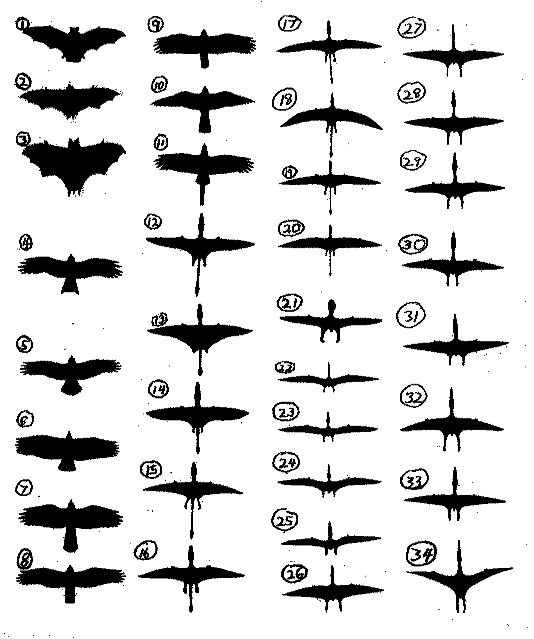
The Sordes pilosus, #13, was chosen, by both Jonah Jim and Jonathan Ragu, from among the many choices shown above.
Those islanders, who were eyewitnesses of the ropen, could have chosen one of the bird silhouettes, if they had actually seen a bird. Compare this image on the left, of the Sordes pilosus Rhamphorhynchoid pterosaur, with the previous photographs of Hornbill birds. That bird appears completely different. How easy it would have been for the eyewitnesses to have chosen one of those bird-images, but they did not. They saw something very different from any bird, for the ropen of Umboi Island differs greatly from any bird or bat.
What about the details in the testimony by the eyewitness Gideon Koro, whom I interviewed in 2004? He and his six friends were terrified at the giant ropen that flew over Lake Pung. He described a creature with a tail that was “seven meter” long, a creature with no feathers but a mouth “like a crocodile.” Those seven teenagers did not run home in terror because they had seen a common bird flying over a lake.
In addition, the Hornbill (to the best of my knowledge) does not glow brightly as it flies at night. It also does not dig up the body of an adult human and carry that native’s body up to a mountain to feed on human flesh. No, the Hornbill is not the same thing as the ropen, also known as “indava,” “seklo-bali,” “kor,” and “duwas.” Modern living pterosaurs are not birds.
Manta Rays or Modern Pterosaurs?
He mentions “broad diamond-shaped wings,” as if eyewitnesses have reported that feature. I don’t recall even one eyewitness using the word “diamond” when referring to wings. Many sighting reports (in which a tail is mentioned) include the word “diamond” or “triangle” (or a similar word) when referring to the END OF THE TAIL. That in itself eliminates the Manta ray fish from consideration.
_________________________________________________________________
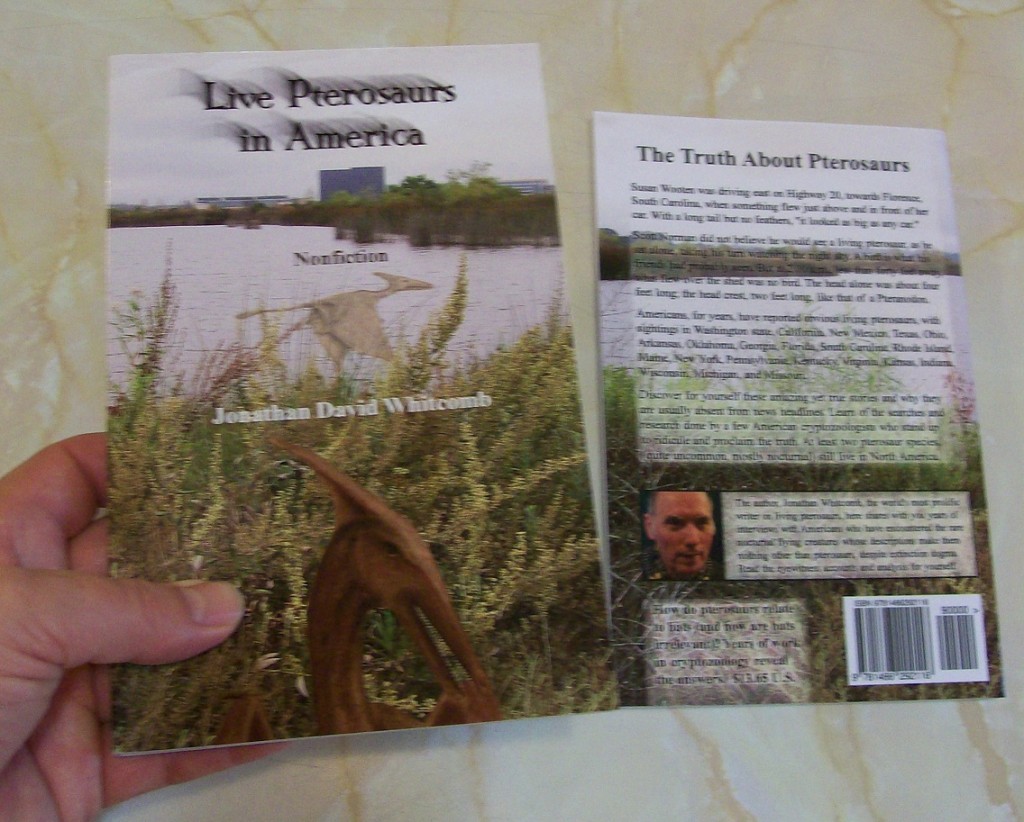
From the Introduction in the nonfiction cryptozoology book Live Pterosaurs in America (third edition):
During those years of expeditions in the southwest Pacific, reports in our own country became impossible to ignore; I received many emails from eyewitnesses across the United States, and the reports kept coming in. Pterosaur-like creatures are not all confined to the tropics. As we began to listen to those Americans, we noticed report-similarities: long tails (often) and apparent bioluminescence (sometimes). We began to believe.



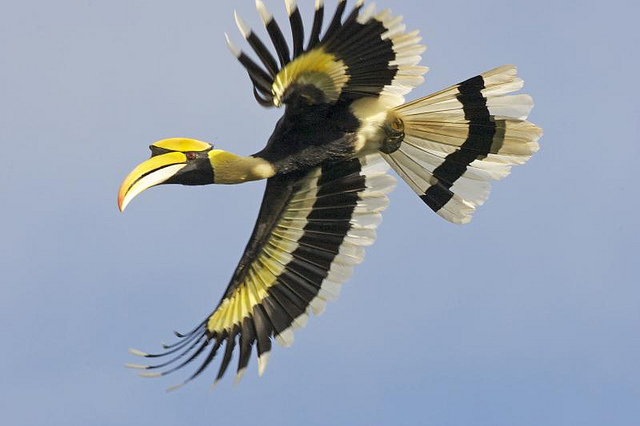

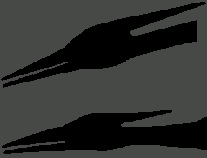
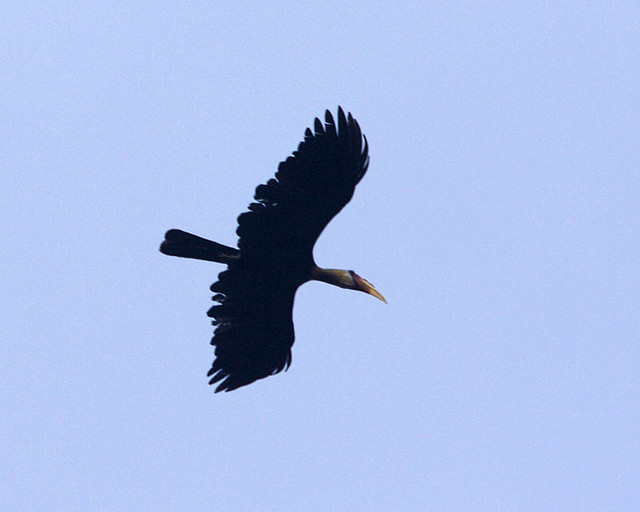
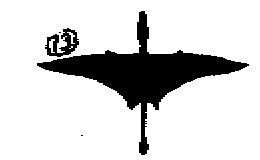
Hello, I was the “Skeptic” mentioned that wrote the article mentioning the giant hornbill. In the first place, let me say that I am NOT against the possibility of surviving Pterosaurs and not against their possible survival in New Guinea. I AM against supposed reports of Pterosaurs that conflict with known pterosaurian anatomy. These Ropen reports DO so conflict. The large pterosaurs did NOT have long tails, and fossils show that Pterosaurs werefurry
In the case of the large-winged, long-tailed ropens, I found that the size and the shape of the wings exactly matched the size and shape of a manta ray and were nothing like a large pterosaur. I showed this by published photographs of large pterosaur fossils and reconstructions. The fact that some creatures were reported to have such a shape and were supposed to be seen over land could be the result of faulty memory: in fact the majority of such sightings occur at the seashore and over water.
Now as to the Giant Hornbill sightings, that was because of another Cryptid reported over the New Guinea/Queensland area and named by Karl Shuker. It was alsosaid to have the same supposed wingspan of twenty feet, but it was not supposed to have a long thin tail. Indeed, one of my correspondants made the distinction that it was a “short-tailed Ropen”
I am only interested in getting the truth out there. What are being described as Ropens in no way correspond to known pterosaurs but on the contrary, they DOcorrespond to bad science-fiction movies and old cartoons such as The Flintstones. And I do not find that invoking the unsubstantiated allegations of bioluminecence strengthens the case in any way.
Cordially, Dale Drinnon.
Thank you, Mr. Drinnon, for commenting here. I am glad that you are not against the possibility of surviving pterosaurs. Some of the ideas you have here expressed have been answered in both my books and in blog posts. In fact, your objection to “reports of Pterosaurs that conflict with known pterosaurian anatomy” has been answered recently on this blog, in the following post: “Objectiveness and Live Pterosaurs,” paragraphs 4-6
https://www.livepterosaur.com/LP_Blog/archives/1328
I think we need to be very careful not to be carried away with a strict preconceived idea that all pterosaurs that have ever lived on this planet must correspond in many details with the fossils that have so far been discovered. A dogmatic adherance to that requirement could easily cause future discoveries of pterosaur fossils to be rejected because they do not match exactly the fossils we already have.
Reply to Drinnon, #2:
Mr. Drinnon said, “I AM against supposed reports of Pterosaurs that conflict with known pterosaurian anatomy.” From this and other things that he has mentioned, I suspect he has not yet read either of my books on modern sightings of pterosaurs: “Searching for Ropens” and “Live Pterosaurs in America” (both published in second editions prior to 2011). If he had read them, he might think differently about insisting that a modern living pterosaur must be precisely like what we now know from only fossils of pterosaurs (fossils already discovered).
I know of two paleontologists who have made this same mistake, grossly overestimating the significance of fossil discoveries up to the present, so Drinnon is not alone in making this mistake.
Reply to Drinnon, #3:
I agree with Drinnon in the strict interpretation of this words: “large pterosaurs did NOT have long tails.” He means that the fossils we now have do not include any very large Rhamphorhynchoids. I agree. The point of modern sightings, however, is the PRESENT, not the past, even if paleontologists did have a fossil for every species (in positively verified adult form and size) of pterosaur.
Reply to Drinnon, #4:
Drinnon said, “Fossils show that Pterosaurs were furry.” If we could interview a paleontologist who specialty includes pterosaurs, I suspect he would inform us that SOME fossils indicate there was at least SOME fur; I believe there are many fossils of pterosaurs that lack evidence of fur, although that does not mean that some species were 100% lacking in fur.
But there is another critical point that Drinnon seems to have missed. Some eyewitnesses DO report some fur or hair on the pterosaur they observed or that was reported. And some eyewitnesses did not have a close enough encounter to verify the presence of fur.
But to the details. The scientist who was with his wife, in Perth, Australia, when they had their sighting, testified that “It did not appear to be covered with feathers but had a leathery texture.” But he then added the following:
“Soon after it passed us, it flew over a more brightly lit sports area which highlighted even more the leathery appearance, also bringing more detail to view. The wings were the most definite leathery feature. They were shaped in a triangular arch, similar to a very elongated shark fin. The body also still appeared leathery, though textured as though possibly covered with fine hair or small scales, the distance preventing any finer observation.”
So he observed a general leathery flying creature but with the possibility that there was a fine covering of what could have been fur.
I have a number of other sighting reports of encounters in Papua New Guinea and in other countries. Hardly any of them, if any, are positively against any presence of fur. Whatever Drinnon is referring to, however, is not mentioned by him in any detail, so he needs to be specific, if he expects us to take seriously his non-fur-in-sightings idea.
Reply to Drinnon, #5:
Drinnon has said, “In the case of the large-winged, long-tailed ropens, I found that the size and the shape of the wings exactly matched the size and shape of a manta ray.” What sighting was that? If he had read my book “Searching for Ropens,” he might have noticed a critical point about the shape of ropens.
In the Woetzel-Guessman expedition of 2004, some eyewitnesses were given a detailed interview involving an evaluation of silhouettes of dozens of birds, bats, and pterosaurs. In my opinion, only two of the native eyewitnesses had a good enough personal sighting to give a credible evaluation: Jonathan Ragu and Jonah Jim. Out of dozens of images of birds, bats, and pterosaurs they both chose the same image: Sordes pilosus (a long-tailed Rhamphorhynchoid pterosaur). And those two interviews were at different times, in different parts of Umboi Island, so those two men gave independent accounts of their encounters and gave independent choices of images.
By the way, the Sordes pilosus has sharp pointed wings, exactly the opposite of the shape of a manta ray fish (even if a fish could fly over jungle trees far from land, as was the case with Jonah Jim’s sighting).
Reply to Drinnon, #6:
Drinnon said that “some creatures . . . were supposed to be seen over land could be the result of faulty memory.” What creature witnessed by what eyewitness? Imagining other persons having memory problems is far different from examining particular eyewitness reports.
For seven years I have interviewed eyewitnesses, publishing the results in books, in a peer-reviewed journal of science, and in hundreds of web pages and blog posts. Details matter.
Reply to Drinnon, #7:
Drinnon mentioned “unsubstantiated allegations of bioluminecence.” I suspect he has read little, if anything, I have written about bioluminescence and living pterosaurs.
A missile defense physicist (Clifford Paiva) has given us a detailed report on the analysis of the two indava lights videotaped deep in the mainland of Papua New Guinea. Has Drinnon examined that report in detail?
A respected British biologist, Evelyn Cheesman, wrote a book with a few pages mentioning her brief evaluation of the mysterious lights she observed deep in the mainland of New Guinea (just north of where the two indava lights were videotaped). Has Drinnon examined those pages in detail?
How many eyewitnesses have testified of the flying lights of Papua New Guinea! Some eyewitnesses, including Jonah Jim and Jonathan Ragu, and Jacob Kepas, have observed the wings of the large nocturnal flying creatures, AS THE CREATURES WERE GLOWING. In other words, they observed large flying creatures that were glowing at night. Has Drinnon considered their accounts in detail?
There is much more I could write on this subject, but I cannot put a book’s worth of information into this comment.